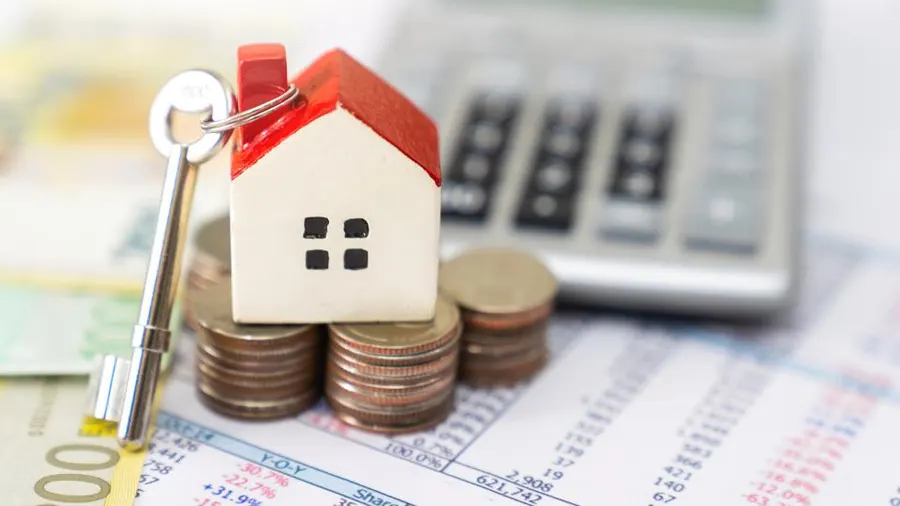With mortgage rates hovering near historic lows, the majority of home buyers today are still choosing standard 30-year or 15-year fixed-rate loans when it's time to finance a home. But unless these buyers can come up with a down payment of 20 percent of their home’s final purchase price, they’ll have to pay the extra cost of private mortgage insurance, which could add $1,000 or more to your mortgage costs each year.
But buyers do have an option to avoid this insurance even if they can’t come up with that big 20 percent down payment: a piggyback loan
A piggyback loan is actually two loans taken out at once. Borrowers today can take out a version of the piggyback loan known as the 80-10-10 loan.
The "80" part of this loan is a conventional fixed-rate mortgage for 80 percent of your home's purchase price. The first "10" is a second mortgage, often in the form of a home equity line of credit, that accounts for the second 10 percent of your home's sales price.
That final "10" is your down payment. In an 80-10-10 loan, you'll have to come up with a down payment of 10 percent of the home's final purchase price.
Not like the boom years
Piggyback loans were more popular during the years of the housing boom. Jeremy David Schachter, branch manager with Pinnacle Capital Mortgage in Phoenix, said that during the boom, back in 2005 and 2006, lenders were originating plenty of 80-20 piggyback loans. In these loans, borrowers took out a primary mortgage to finance 80 percent of their home's purchase price and a second loan to finance 20 percent of the price. This meant that borrowers were not coming up with any down payment at all.
Unfortunately, many of these loans eventually blew up, with borrowers defaulting on them once home values started to fall. Banks have since shied away from piggybacks that don’t require down payments.
"Those loans are a thing of the past," Schachter said. "Today, lenders want at least some down payment. You can get an 80-10-10 piggyback loan, but you won't find an 80-20 loan anywhere."
No PMI?
There is still a big benefit with even today’s 80-10-10 piggyback loan structure: You won't have to pay private mortgage insurance, or PMI, with such a loan. When you take out a mortgage loan but can't come up with a down payment of at least 20 percent of a home's purchase price, you have to pay for PMI. This insurance doesn't protect you. It protects your mortgage lender in case you stop making your monthly payments.
PMI is not cheap. The cost of this insurance varies, but you can usually expect to pay anywhere from 0.3 percent to 1.5 percent of your mortgage loan's original value each year. If you instead take out an 80-10-10 piggyback loan, you can avoid PMI with a down payment of just 10 percent.
Your monthly payment might be lower with a piggyback loan. But the math on this can be complicated, and varies depending on the size of your loan, the term of your first loan and the term of your second mortgage. Ask lenders to calculate for you the difference between your monthly payment with a piggyback loan and your payment with a conventional fixed-rate loan.
Joe Parsons, senior loan officer with PFS Funding in Dublin, California, said that piggyback loans could also be useful for borrowers who are taking out loans that are particularly large. In most parts of the country, any mortgage of more than $647,200 is considered a non-conforming loan.
These non-conforming loans, usually called jumbo loans, are often more expensive for borrowers.
"Larger loan amounts typically have higher interest rates than those that meet the Fannie Mae or Freddie Mac loan guidelines," Parsons said. "A borrower seeking a loan above the loan limits can avoid the higher cost by getting a loan for the maximum conforming amount and adding a piggyback loan to make up the difference."
Possible downsides
Even if your monthly payment will be lower with a piggyback loan, understand that there are some drawbacks with taking out two loans instead of one. Your lender will be originating two loans, so you might have to pay more in closing costs.
Also, the interest rate on your second mortgage loan will usually be higher than the rate on a standard fixed-rate loan. According to the Freddie Mac Primary Mortgage Market Survey, the average interest rate on a 30-year fixed-rate mortgage stood at 5.54 percent. For a 15-year fixed-rate mortgage, that rate was 4.75 percent.
The interest rate on your second mortgage might also be a variable one, meaning it could rise or fall depending on the performance of whatever economic indicators that rate is tied to. And you'll be stuck with your second mortgage loan until you pay it off or refinance to a new loan. That isn't the case with PMI. When you have paid down your mortgage balance to 78 percent or less of your home's original appraised value, your lender is required to cancel PMI.
Interest-only piggyback loan
Your second loan might also be an interest-only loan, at least initially, said David Hosterman, branch manager with Greenwood Village, Colorado-based Castle & Cooke Mortgage. This can be risky, and could you leave with a huge payment 10 years or so into your loan.
“When consumers get piggyback loans, they need to be aware of the terms and conditions of the second mortgage,” Hosterman said.
If this second loan is an interest-only product, it will come with what is known as a draw period, which usually lasts 10 years. During this time, you will only be paying interest on the second loan, meaning that you are not paying off the principal. After the draw period ends, you might be required to make one big payment to pay off that loan. That can be frightening, especially if you can't refinance to a new loan to pay off your piggyback loan. Will you have enough funds available to pay off your second mortgage, which could total in the tens of thousands of dollars, all at once?
If not, make sure that you have the option of paying off the principal of the second loan over time after the draw period ends. You might have the choice of paying off the principal balance over as many as 20 years instead of having to come up with a large lump-sum payment.





